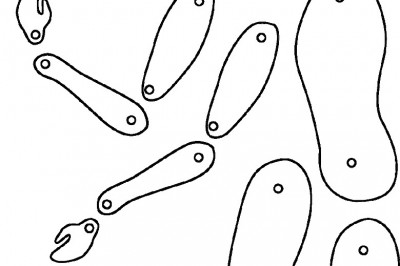Ergonomic: Human Factors and Work Design Principles
Ergonomics and human factors are terms often used synonymously. Both describe the interaction between the worker or operator and the work interface. Both are concerned with trying to reduce work stress in the work place. Ergonomics traditionally has focused on how the work affects people and how to fit the worker to the work. This focus includes assessing the workloads, physiologic responses to the workloads, anthropometrics and biomechanics. In contrast, human factors engineering traditionally has been more focused on the man-machine interface, or human engineering. In other words, how to make the process flow more efficiently with less human error. Human factors engineering, traditionally has focused on human size and behavior stereotypes relative to the work interface including the work area and equipment design.
Goals of Human Factors Engineering
The goals of human factors engineering are to reduce the potential for human error, reduce effort and enhance worker performance. The application of human factors engineering design to ergonomics in the workplace can range from product size and configuration to the execution of manufacturing systems. The goal of human factors engineering is to create a transparent interface between the workers and the tools and equipment that they use to construct products or provide services. By designing a worker-work interface that falls within the workers physical and cognitive capabilities, and by reducing the exposure to risk factors, which may contribute to musculoskeletal injuries, work-related injuries and accidents will be minimized. In addition, work interfaces, when well designed will result in predictable human behavior patterns that will be routine and systematic, thus resulting in a reduction of human error and the enhanced quality and consistency of worker performance.
Population Stereotypes
Human factors design uses engineering psychology, the study of designing systems, based on the information processing capabilities of the human mind. Engineering psychology is based on the premise that human behavior is predictable, and as a result, uses this behavior to design the most efficient work stations with the least amount of potential for error. When a work interface is designed well, the work performed at this interface will be routine and consistent. This concept applies to all work activities, whether it involves the controlling of automated equipment or the creation of products on an assembly line. This is because the work interface is easy to read or interpret and there is little distraction or confusion that may result in worker error or injury. When a work interface is poorly designed, the interface is difficult to read or interpret and may be confusing for some workers. In this situation, there is a higher probability for the workers to perform less efficiently, by working harder and making more mistakes! In effect, performing less efficiently. Over time, this over working will cause fatigue and over stress the muscles and joints, thus lead to an increased incidence of musculoskeletal injuries. The consequences of injuries and errors on the production line are lower production rates and lower quality of the product or service.
In order to enhance worker performance, reduce worker stress and fatigue and at the same time minimize human error, the work interface must be designed in such a way that the work will be performed routinely and consistently. In other words, the work interface must be well designed. The design of work interfaces is really the design of how to transfer information. Information is transferred from the system operator via a control mechanism. Control mechanisms can include keyboards, computer mice, levers, buttons, switches, steering wheels, or cranks. Information is also transferred from a work interface to the worker. A worker reads a computer screen, sign or control panel and uses this information to adjust equipment, enter data, or monitor production levels. Performance is dependent on how fast and easy the information transfer process is. This level of performance can be enhanced if the controls operate as one expects them to, ie they follow population stereotypes.
Population stereotypes are based on outcome predictions. These stereotypes evolved from observing and studying human behavior outcomes in response to certain situations. Population stereotypes are based on the premise that people expect things to behave in certain ways when they are operating controls or when they are in certain environments. Population stereotypes are then used to design interfaces that result in predictable human behavior and safe and efficient work practices. This use of predictable human behavior or population stereotypes will also help to minimize human errors and thus enhance worker performance. Some examples of population stereotypes include the following:
• Color choices- Red signifies "stop" or "danger", yellow signifies "warning" "slow" or "caution", and Green signifies "go". Flashing lights tend to indicate "warning" or "alert".
• The "up" position of a switch signifies "on", the "down" position signifies "off".
• The "up " position signifies "start", the "down" position signifies "stop".
• Rotary controls are expected to turn clockwise for "on" positions, and counterclockwise for "off" positions.
Human Error
The goals of human factors engineering are to reduce the potential for human error, reduce effort and enhance worker performance. There are three types of human error, observed in the work setting. All three occur, and all three have the same outcome, which may be an injury, an accident, or reduced production rate and quality. The first type of human error observed in the work setting is the perception error. The perception error is when the worker or operator does not perceive or notice the warning or error indicator. This may occur if a worker expects to see a red light indicating "Stop" or "warning" but instead sees a blue light.
The second type of error that is observed in the work setting is an error in decision-making. The decision-making error occurs when the worker or operator is overloaded with other decisions at the same time. The operator must chose which decision to focus on, and chooses to ignore the warning. This may occur when a machine operator is given multiple machines to run and is not physically capable to attend all three machines at one time.
The third type of human error seen in the workplace is an action error. The action error occurs when the worker or operator reacts to the warning, but does so incorrectly. This occurs when a worker activates the wrong control mechanism, or moves the control in the wrong direction. This error may be due to confusing or difficult to read control panels or control switches that are not consistent with expected outcomes. If a worker, turns a control switch down, expecting the machine to stop, but instead, the machine stayed on, or increased power, this is against the expected outcome stereotype, but this situation would still result in an action error. In order to control or minimize these human errors, work area design should be carefully laid out and very easy to read and understand.
Universal Design
The concept of Universal Design evolved from evaluating the types of human error observed in the work setting and by studying the stereotypical behavior of the human population. Universal Design is the concept of designing products or work environments that will be used by a variety of people, with a large range of physical and cognitive abilities, working in a wide variety of work situations. Universal Design was developed to reduce the types of human errors observed in the workplace as well as enhance worker productivity. This concept of universal design, or designing for the population, includes work design for those individuals with no impairments, as well as, for designing for those individuals with functional limitations or physical or cognitive impairments. The principles or goals of universal design include:
• Minimize confusion.
• Minimize complexity.
• Make essential information clear.
Summary
Concepts from human factors engineering, universal design and population stereotypes are used to modify or design work areas. In practical terms these engineering concepts can be useful to enhance human performance, reduce worker fatigue, facilitate safe and appropriate return to work for an injured worker and reduce human error.


























